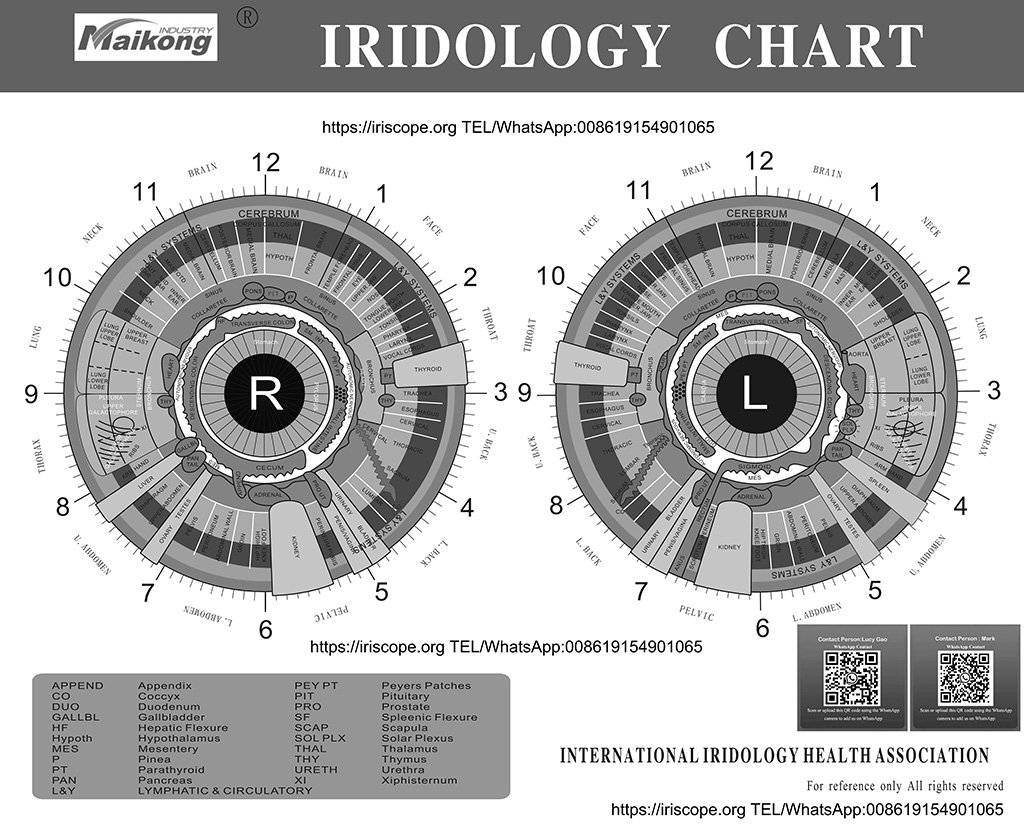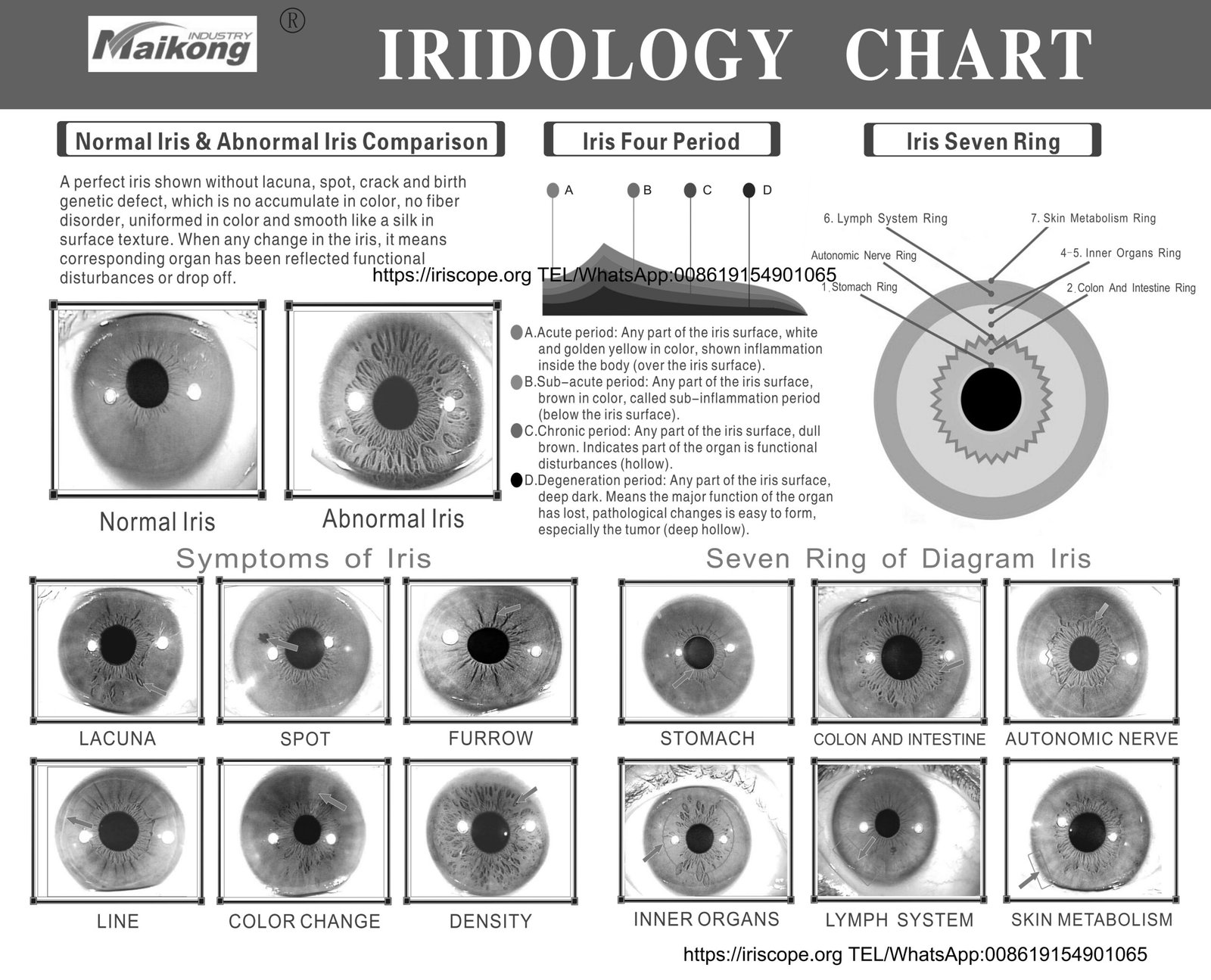The iris, the colored part of your eye, contains intricate patterns that may reveal valuable insights about your overall health. تشخیص Iridology Iris is a holistic assessment method that examines these patterns to identify potential health imbalances and constitutional strengths. As specialists in professional iridology equipment, we’ve created this comprehensive guide to help you understand this fascinating field and its applications in holistic health assessment.
History of Iridology Iris Diagnosis
Iridology Iris Diagnosis-The practice of examining the iris for health insights dates back thousands of years, with roots in ancient Egyptian, Chinese, and Greek healing traditions. However, modern Iridology Iris Diagnosis as we know it today began taking shape in the 19th century.
Dr. Ignatz von Peczely, a Hungarian physician, is often credited as the father of modern iridology. As a child, he noticed changes in an owl’s iris after the bird suffered a broken leg. This observation sparked his lifelong research into the connection between iris markings and physical conditions. In 1880, he published the first detailed iris chart mapping various body regions to specific areas of the iris.
Another significant contributor was Nils Liljequist, a Swedish homeopath who observed changes in his own iris after medical treatments. His work led to the publication of an influential iris diagnosis atlas in 1893, further developing the field’s theoretical foundation.


Throughout the 20th century, practitioners like Bernard Jensen in the United States and Josef Deck in Germany further refined iridology techniques and charts. Today, Iridology Iris Diagnosis continues to evolve with advanced imaging technology and more sophisticated understanding of iris structures.
Scientific Basis of Iridology Iris Diagnosis
The theoretical foundation of iridology rests on the concept that the iris connects to every organ and tissue in the body through the nervous system and energy pathways. According to this perspective, the iris acts as a “نقشه” where changes in distant body tissues may be reflected as alterations in iris fibers, pigmentation, and structure.
From a physiological standpoint, the iris contains thousands of nerve endings connected to the brain via the optic nerve. Proponents suggest this creates a feedback mechanism where systemic changes might influence iris appearance. The iris is also highly vascular and contains connective tissue, melanin, and various specialized cells that could potentially respond to biochemical changes in the body.
It’s important to note that conventional medicine has not validated many iridology claims through controlled studies. The scientific community generally considers the evidence for iridology’s diagnostic accuracy to be limited. However, research continues, and some studies have explored potential correlations between specific iris signs and certain health conditions.
As suppliers of professional iridology equipment, we encourage a balanced approach that recognizes both traditional wisdom and the need for ongoing scientific investigation.
How Iridology Iris Diagnosis Works: A Step-by-Step Guide
Understanding the practical application of iridology requires familiarity with the examination process and interpretation methods. Here’s how practitioners typically conduct an iridology assessment:
Equipment Used in Iridology
Accurate iris examination requires specialized tools that provide detailed magnification and proper illumination:
- Iriscope: A specialized device that combines magnification with proper lighting to examine the iris in detail.
- Iridology Camera: High-resolution digital cameras with macro capabilities designed specifically for capturing detailed iris images.
- Iridology Software: Programs that enhance, analyze, and store iris images, often with reference charts and analysis tools.
- Magnifying Lens: Traditional handheld tools that provide basic magnification for preliminary examinations.
- Iridology Charts: Reference maps showing how different iris zones correspond to various body systems and organs.
تجهیزات ایریدولوژی حرفه ای
We provide high-quality iriscopes, iridology cameras, and specialized software for practitioners worldwide. Our equipment meets the highest standards for accurate iris analysis.
Call for Equipment Information
روند معاینه
A typical iridology examination follows these steps:
- Client History: The practitioner takes a detailed health history to understand existing concerns and symptoms.
- Proper Lighting: The examination room is set up with appropriate lighting to avoid reflections and shadows.
- Iris Observation: Using specialized equipment, the practitioner carefully examines both irises, noting their color, structure, and any markings.
- Image Capture: High-resolution photographs may be taken for detailed analysis and future comparison.
- Chart Comparison: Observations are compared against standard iridology charts to identify potential areas of concern.
- Analysis: The practitioner interprets the findings based on iridology principles and their professional experience.
- Consultation: Results are discussed with the client, often with recommendations for supporting overall health.
Interpreting Iris Signs in Iridology Iris Diagnosis
Iridologists analyze several key aspects of the iris to form a comprehensive assessment:
Iris Constitution
The basic iris structure and color provide information about genetic predispositions and inherent strengths or weaknesses. The main constitutional types include:
- Lymphatic: Blue iris, associated with sensitivity in lymphatic and respiratory systems
- Hematogenic: Brown/mixed iris, linked to blood and digestive system characteristics
- Biliary: Green/hazel iris, connected to liver, gallbladder, and digestive functions
Iris Signs and Markings
Various markings in the iris may indicate specific conditions or tendencies:
| علامت آیریس |
ظاهر |
تفسیر سنتی |
| لاکونا |
Closed, darkened area in the iris fibers |
Potential inherent weakness in the corresponding organ or system |
| شعاع خورشیدی |
خطوط مانند صحبت از شاگرد |
Possible toxin elimination pathways or nerve irritation |
| حلقه های عصبی |
حلقه های دایره ای در اطراف عنبیه |
Stress patterns, nervous tension, or autonomic nervous system imbalance |
| رنگدانه |
لکه های تیره یا تغییر رنگ |
Potential chemical deposits or localized inflammation |
| دخمه |
Open, lighter areas in the iris fibers |
Potential for increased activity or acute conditions in corresponding areas |
Benefits of Iridology Iris Diagnosis for Health Assessment
While scientific validation remains limited, many practitioners and clients report several advantages to incorporating iridology into holistic health assessments:
مزایای احتمالی
- Non-invasive examination method requiring no blood tests or painful procedures
- Holistic perspective considering the interconnectedness of body systems
- May identify potential health tendencies before symptoms appear
- Provides a visual tool for tracking changes over time
- Can complement other health assessments for a more comprehensive view
- Encourages preventative health approaches and personal responsibility
محدودیت ها
- Limited scientific validation through controlled studies
- Interpretation can vary between practitioners
- Not intended to diagnose specific diseases
- نباید تشخیص پزشکی معمولی را جایگزین کند
- Results require skilled interpretation by trained practitioners
- Equipment quality significantly impacts assessment accuracy
When performed by a skilled practitioner using quality equipment, iridology can provide valuable insights as part of a comprehensive health assessment approach. It’s particularly valued for its ability to consider constitutional factors and identify potential areas for preventative care.
تجهیزات ایریدولوژی حرفه ای را کاوش کنید
Our company specializes in high-quality iriscopes, iridology cameras, and analysis software for practitioners worldwide. Contact us to learn about our products and customization options.
WhatsApp Consultation
تصورات غلط رایج در مورد تشخیص عنبیه ایریدولوژی
As with many complementary health approaches, iridology is sometimes misunderstood. Let’s address some common misconceptions:
Misconception: Iridology diagnoses specific diseases
Clarification: Iridology is not designed to diagnose specific diseases. Instead, it identifies constitutional strengths, weaknesses, and potential imbalances in body systems. It’s best viewed as an assessment tool rather than a diagnostic method.
Misconception: Iridology is completely rejected by science
Clarification: While many iridology claims lack substantial scientific validation, research continues in this field. Some studies have explored potential correlations between specific iris signs and certain health conditions. The scientific community generally calls for more rigorous research rather than outright dismissal.
Misconception: Any changes in the iris indicate disease
Clarification: Not all iris markings indicate problems. Many are constitutional features present from birth that simply reflect individual characteristics. Additionally, some changes may reflect healing processes rather than deterioration.
Misconception: Iridology replaces conventional medical care
Clarification: Responsible practitioners present iridology as complementary to, not a replacement for, conventional medical care. It’s most valuable when used alongside other health assessment approaches.
Professional Equipment for Accurate Iridology Iris Diagnosis
The quality of equipment significantly impacts the accuracy and reliability of iridology assessments. Professional practitioners rely on specialized tools designed specifically for detailed iris examination.
Professional Iriscopes
Specialized optical devices that combine proper magnification with ideal illumination for detailed iris examination. Quality iriscopes provide clear, undistorted views of iris structures.
Iridology Cameras
High-resolution digital cameras with macro capabilities designed specifically for capturing detailed iris images. These allow for documentation, comparison over time, and detailed analysis.
Analysis Software
Specialized programs that enhance, analyze, and store iris images. Advanced software includes reference charts, comparison tools, and reporting features for comprehensive assessments.
نکته حرفه ای: When selecting iridology equipment, prioritize image clarity, proper illumination, and ease of use. The ability to document and compare iris images over time is invaluable for tracking changes and assessing the effectiveness of health interventions.
Contact Our Iridology Equipment Specialists
We provide customizable iridology equipment solutions for practitioners worldwide. Our products include professional iriscopes, high-resolution cameras, and comprehensive analysis software.
Email for Product Information
Practical Applications of Iridology in Holistic Health
Iridology serves various practical purposes within holistic health frameworks. Here are some of the primary applications:
ارزیابی مشروطیت
Iridology excels at identifying inherited tendencies and constitutional strengths or weaknesses. This information helps practitioners develop personalized health support strategies that account for individual predispositions.
Preventative Health Guidance
By potentially identifying areas of weakness before symptoms develop, iridology can guide preventative health measures. This aligns with the holistic principle that prevention is preferable to treatment.
ابزار ارزیابی مکمل
When used alongside other health assessment methods, iridology provides additional perspectives that contribute to a more comprehensive understanding of health status.
Client Education and Engagement
The visual nature of iridology makes it an effective educational tool. Clients can literally “see” aspects of their health reflected in their iris, which often increases engagement with health recommendations and personal responsibility.
“The true value of iridology lies not in diagnosing specific diseases, but in understanding constitutional tendencies and supporting the body’s inherent healing capabilities through targeted lifestyle and nutritional approaches.”
– Contemporary Iridology Perspective
Conclusion: The Future of Iridology in Holistic Health
Iridology Iris Diagnosis continues to evolve as technology advances and our understanding of the connections between iris features and health deepens. While maintaining its roots in traditional observation techniques, modern iridology increasingly incorporates digital imaging, software analysis, and integration with other health assessment approaches.
For those interested in exploring this field, quality equipment and proper training are essential. The iris contains incredibly complex and detailed information that requires both technical tools and skilled interpretation to utilize effectively.
Whether you’re a health practitioner considering adding iridology to your practice or someone interested in the insights this approach might offer, we invite you to reach out with your questions. Our team combines technical expertise in iridology equipment with practical knowledge of its applications in holistic health settings.































